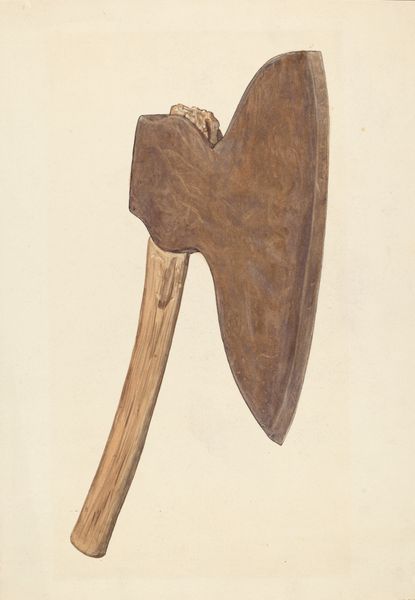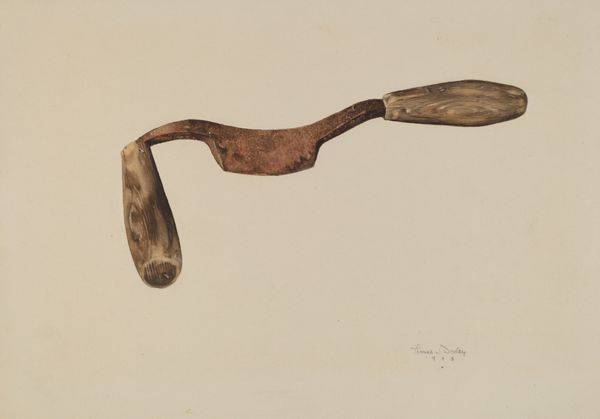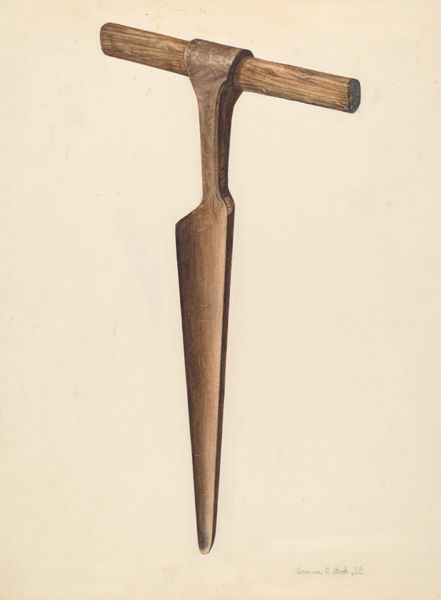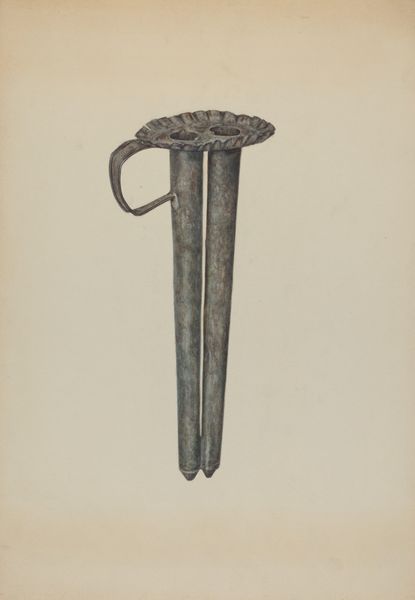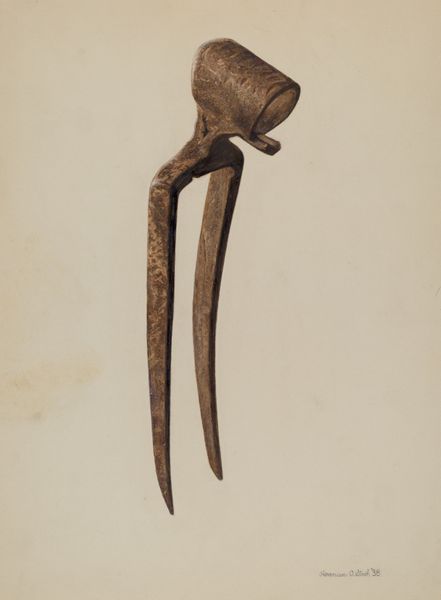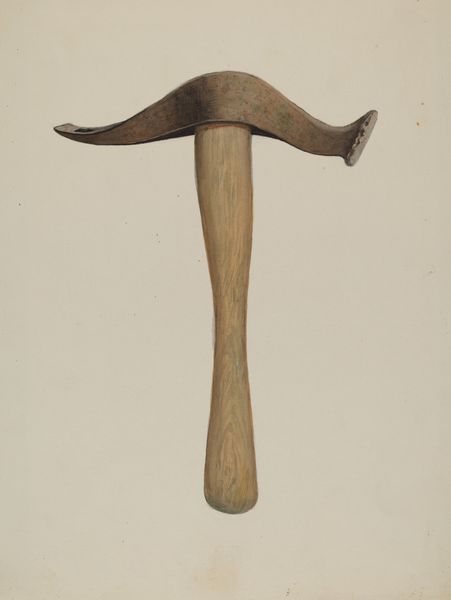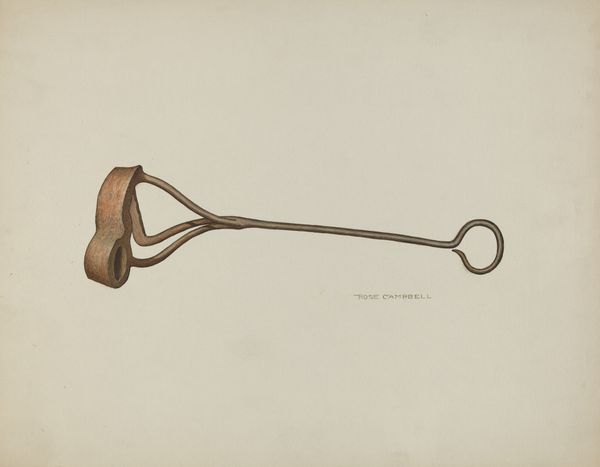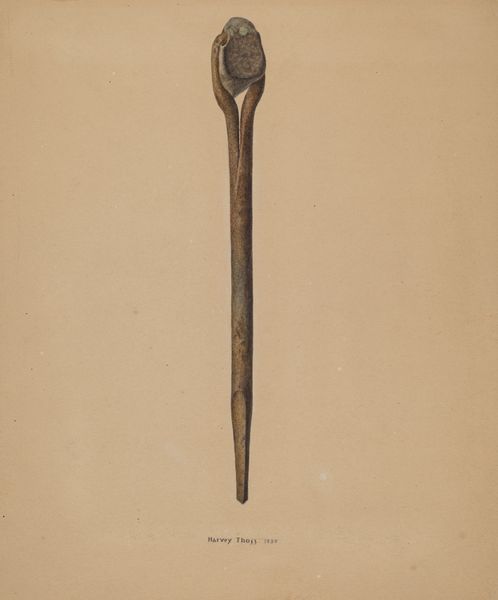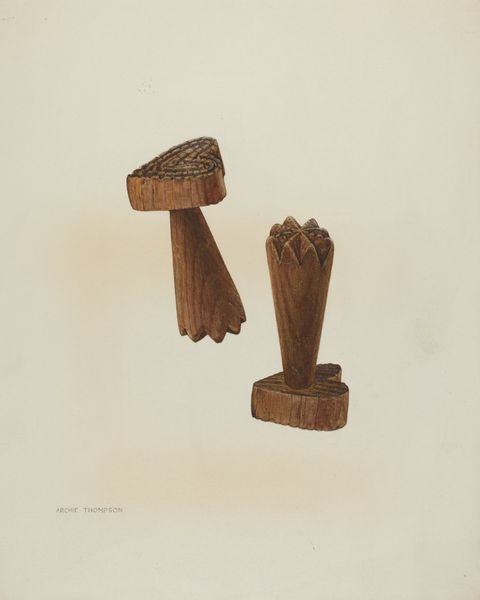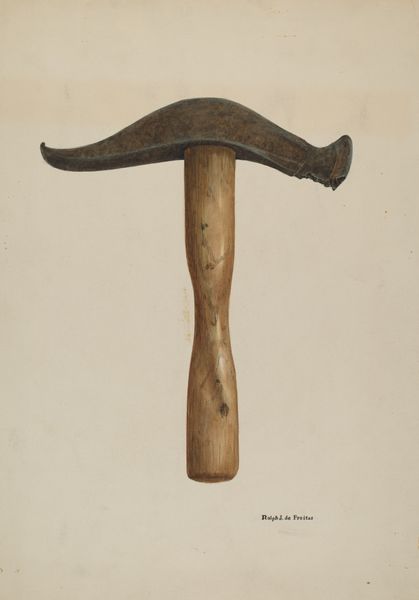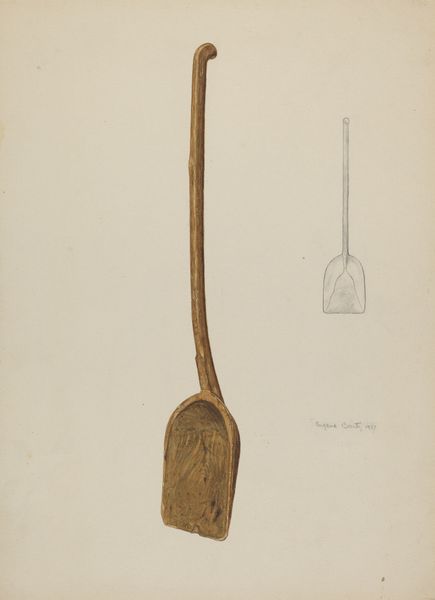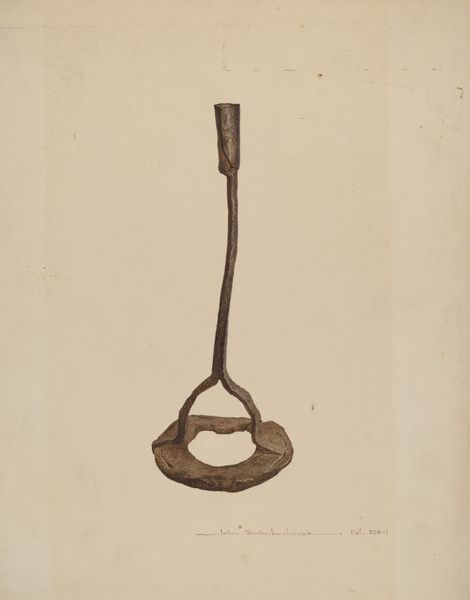
drawing, painting, paper, watercolor
#
drawing
#
painting
#
landscape
#
paper
#
watercolor
#
watercolor
Dimensions: overall: 29 x 22.5 cm (11 7/16 x 8 7/8 in.) Original IAD Object: overall: 24 5/8" high; head: 11" high; 8 3/4" wide; 1 1/4" wide 1 1/4" deep
Copyright: National Gallery of Art: CC0 1.0
Curator: Roberta Elvis’s rendering of a "Broad Axe," likely from around 1941, offers a stark and seemingly simple portrayal of this tool in watercolor and ink on paper. What strikes you initially about this work? Editor: The axe's weathered texture immediately captures my attention. The rusty tones of the metal, the way the light reflects off the blade - it feels symbolic of age, labor, and perhaps even obsolescence. I see a visual elegy here, a silent commentary on fading traditions. Curator: Indeed. These paintings and drawings of American tools were commissioned to index tools, mostly for use in historical trades. These images capture pre-industrial crafts on the brink of disappearing—documenting objects connected to forms of labor with deep roots in American history and class dynamics. Editor: The choice of rendering the axe in such detail, even at what appears to be a measured "SCALE ¼"=1'," lends it a particular gravity, almost like an icon. What historical narratives or social meanings might such an object have carried? How do you see it speaking to American identity at that time? Curator: Elvis, like many artists under government patronage during that period, participated in the construction of collective memory through representing very specific aspects of it. An axe is obviously tied to work and struggle but I also read here a strong message connected with progress: the making of the nation as labor but also conquest. Editor: It makes me reflect on how often the iconography of progress masks acts of erasure or violence. That axe is a complex emblem then - an object of utility, burdened with layers of symbolic weight. Curator: Exactly. Elvis doesn't offer a romantic depiction but encourages us to critically assess how material culture encodes power dynamics and historical narratives, particularly when these practices and technologies fall into disuse. The choice to depict the tool without its context is not simply technical. It is quite meaningful. Editor: So the Broad Axe exists here as both a ghost of a past work, but also a call for greater clarity, both things essential for a better and honest social memory. Curator: Precisely. A powerful testament to the layers within what we often perceive as everyday objects.
Comments
No comments
Be the first to comment and join the conversation on the ultimate creative platform.
